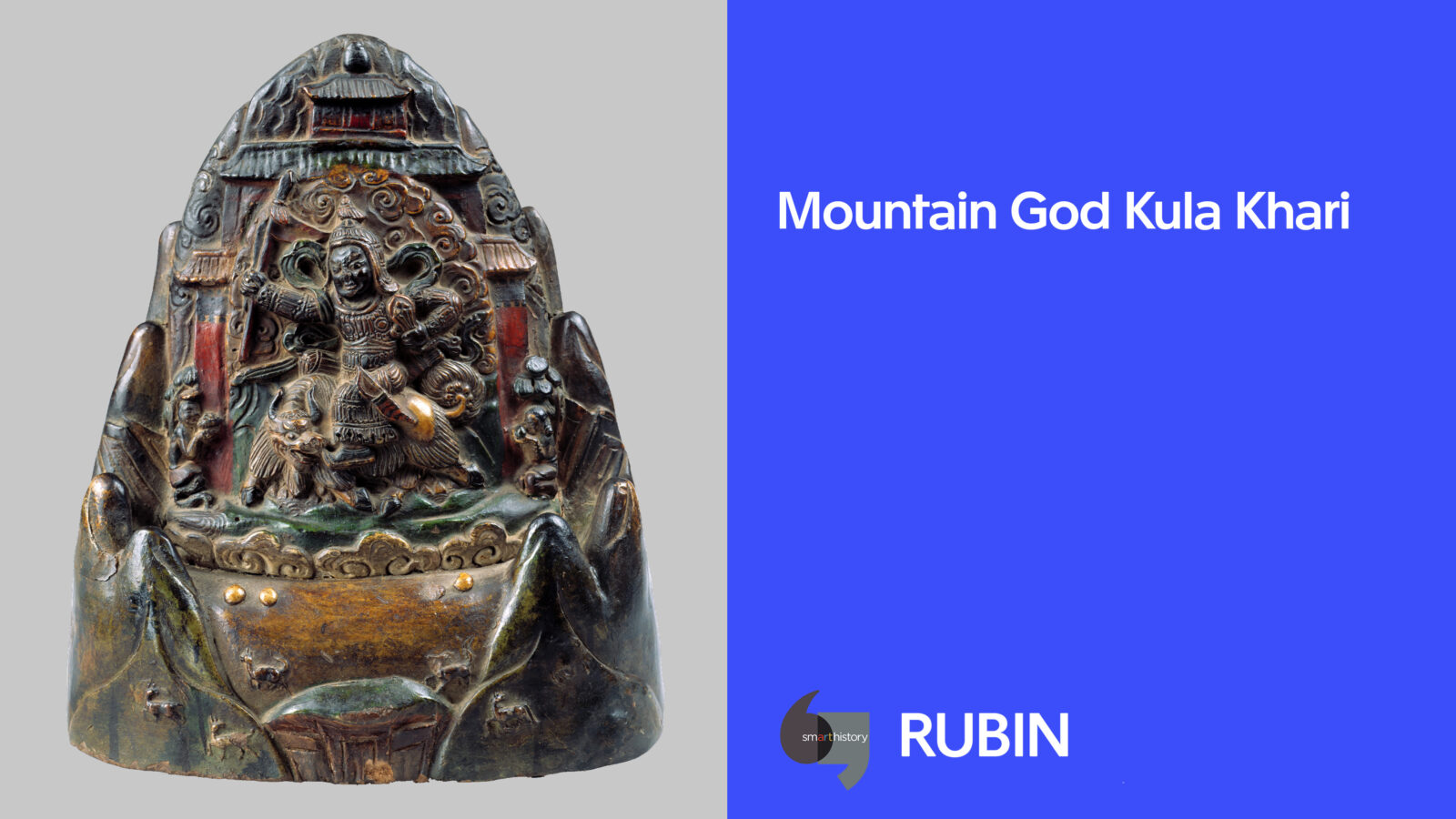Tibet
19th century
Tibet
19th century
A local protector god, Kula Kari occupies a mountain in Lhodrak, south of the Tibetan capital of Lhasa and near the border with Bhutan. Kula Kari is a god in Tibet’s indigenous Bon religion who was later absorbed into the Buddhist pantheon, and he is still revered in both traditions. He belongs to a group of local divinities and spirits that were subjugated by Buddhist teachers and bound to serve as protectors of the region’s new faith. Here he is dressed as a Tibetan warrior riding a shaggy yak (above left). Yaks, native to the Himalayas and adjoining regions of Inner Asia, rarely find such prominence in Tibetan Buddhist art except for in the context of local protector gods. Additional tiny animals roam near the base of the mountain abode, here symbolize by a three-story temple with Chinesestyle eaves that frames the god. Note the sculpture’s clever use of teardrop-shaped mountain forms to create a landscape setting.

A kind of energy that can be used, individually and collectively, to effect change.
A virtuous feeling and deep respect toward an authentic teaching, teacher, or path. Buddhists believe that expansive study, analysis, and meditation are essential steps for cultivating a healthy and enduring devotion.
Prescribed practices that carry symbolic meaning and value within a specific tradition and are intended to attain a desired outcome. Rituals are usually done as part of a ceremony or regular routine.
Today, Tibetans primarily inhabit the Tibetan Plateau, situated between the Himalayan mountain range and the Indian subcontinent to the west, Chinese cultural regions to the east, and Mongolian cultural regions to the northeast. During the 7th to 9th century, Tibetan rulers expanded their empire across Central Asia, and established Buddhism as the state religion.
Get the latest news and stories from the Rubin, plus occasional information on how to support our work.